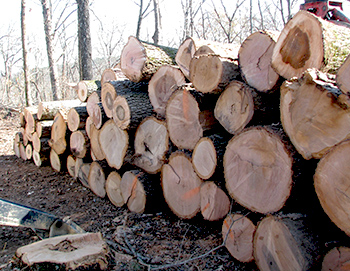Types of Energy Resources
Biomass
Biomass is produced from living or dead organisms and can be used to produce heat or to generate electricity. Plant and animal wastes can be used to produce biomass. There are several forms of biomass.
Wood Biomass & Firewood

Wood biomass is the most commonly found biomass. historically, humans utilized the heat produced from burning wood to keep themselves warm and to cook food. In addition, various power plants use wood and wood wastes to produce their own steam and electricity.
Other Biomass
The most widely known use of agricultural biomass in Arkansas is the production of fuels from energy crops such soybeans. The recent increase in corn acreages may also contribute significantly to fuel production. Other biomass includes residues from agriculture and animal wastes as well as grasses.
Geothermal
Geothermal energy is energy obtained from the Earth's core. This can be seen in the form of volcano eruptions and geysers.
Geothermal power is cost effective, reliable and environmentally friendly however, it has been limited to certain areas. In recent years technological advances have allowed researchers to find ways to harness this energy and make it accessible in other parts of the world.
Hydro Power
Hydropower is energy that resulted from moving water such as rivers and waterfalls. The force of the water as it moves downstream powers generators. Waterwheels are examples of early forms of hydropower.
Solar Power
Solar power can be classified as either active or passive. Active solar power comes from the use of man made tools such as solar panels (photovoltaics) to convert the sun's energy into a usable form.
Passive solar power techniques include designing a building for optimal sunlight coverage, orienting a space to circulate the air naturally or using building materials that help disperse light and heat.
Solar Thermal Power
Solar thermal energy uses the sun's energy to create heat. Solar thermal heat collectors are classified into low, medium and high heat categories. Low heat collectors are flat plates used for heating small areas such as swimming pools. Medium heat collectors also use flat plates, but are used for residential and business water heating purposes. High heat collectors use mirrors and lenses to concentrate solar light and is generally used in electricity production.
Solar Photovoltaics
Sunlight can be converted into usable electricity using photovoltaics (also known as Solar Panels). Solar photovoltaic systems can be found on buildings, automobiles, boats. As the price to manufacture decreases, the use of Photovoltaic cells will increase.
Wind Power
Wind energy is formed by the movement of air and has been around for hundreds of years in the form of windmills. Wind turbines look like huge windmills and harness the wind power to generate electricity. Wind turbines are huge windmills that harness the wind power to generate electricity.